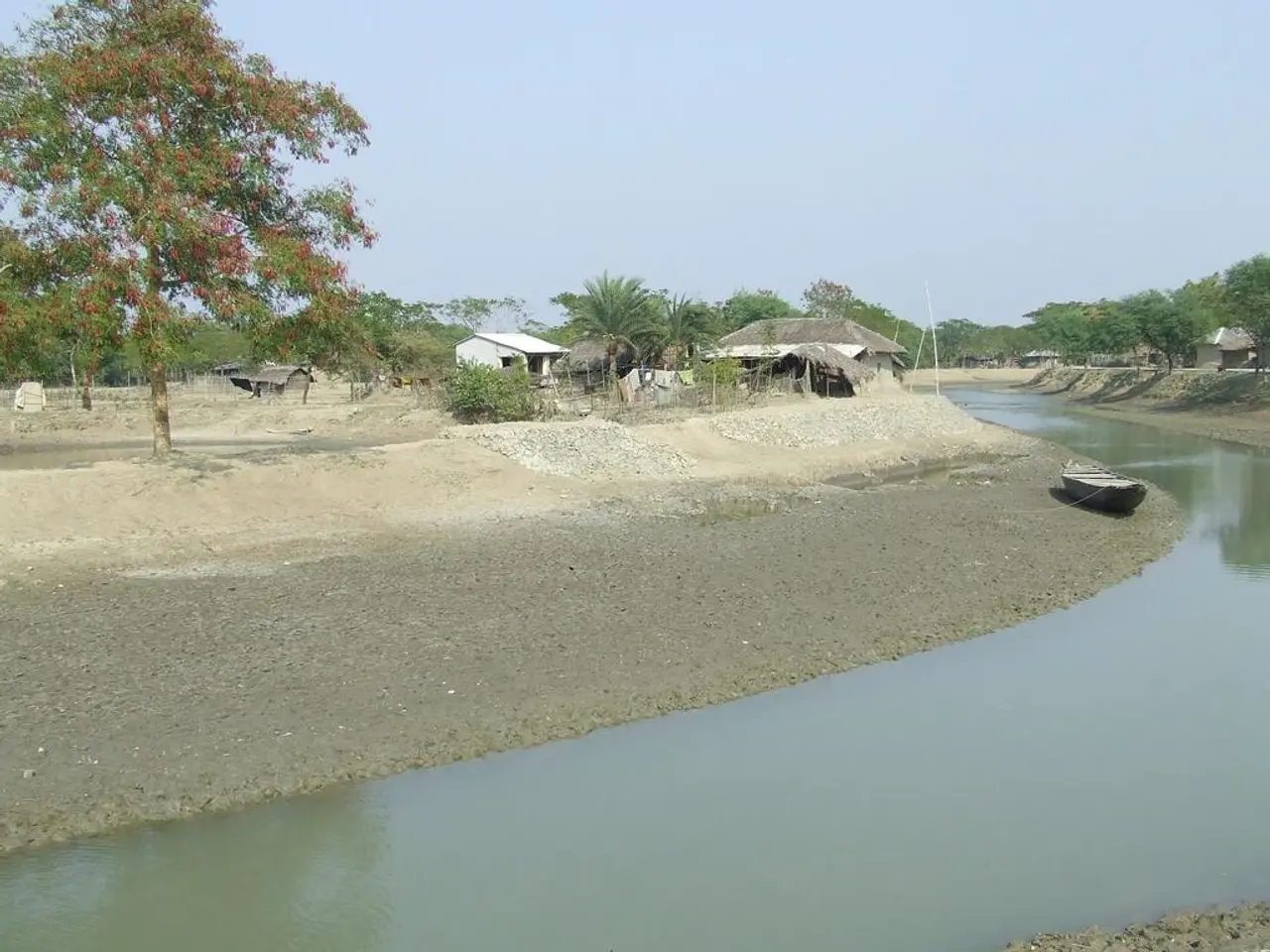Ancient Peruvian Civilization Constructs Floating Metropolis atop Lake Titicaca
In the high-altitude expanse of Lake Titicaca, the floating islands of the Uros people stand as a remarkable testament to human ingenuity, sustainability, and resilience. These islands, constructed over 500 years ago using the abundant totora reeds that grow in the lake, are more than just architectural marvels; they are a living embodiment of a unique culture and a practical response to environmental challenges.
The Uros' innovative construction method involves bundling large blocks of totora reeds, which naturally float, and anchoring them to the lakebed for stability. The reeds are densely layered to form the base of the islands, and since the reed material touching the water constantly rots, the Uros continuously add fresh reeds on top to maintain and rebuild the islands.
Historically, the Uros are believed to have built these floating islands as a means of protection, initially from conflicts between the Coyas and Incas, and later during the Spanish invasions. Today, the Uros culture, which predates the Inca civilization, remains distinct with its ancestral lifestyle. The islands serve not just as a home but also as a showcase of an integrated traditional way of life adapted to the environment, with the reeds used not just for the islands but also for houses, boats, and crafts.
Modern adaptations have seen the Uros incorporate solar panels to meet basic needs, and the islands have become a major tourist attraction, known for showcasing an alternative and enduring traditional culture at a high altitude of 3,800 meters.
However, the delicate ecosystem of Lake Titicaca faces environmental threats, including pollution, climate change, and overfishing. Recognising these challenges, the Uros are advocating for sustainable practices and environmental stewardship. Their use of natural materials and minimal environmental impact is intriguing to researchers, offering valuable insights into sustainable living and resource management.
The future of the floating islands depends on the Uros' ability to navigate a rapidly changing world while maintaining their traditions and embracing positive change. The Uros' ability to adapt and innovate is a testament to the strength of their heritage, making the floating islands a living symbol of cultural resilience. The islands, therefore, serve not just as a historical artifact but as a beacon of hope and inspiration for future generations, demonstrating that with ingenuity, sustainability, and resilience, human societies can thrive even in the most challenging environments.
References:
[1] Floating Islands of Lake Titicaca: A Unique Culture and Tradition. (n.d.). Retrieved from https://www.peru.travel/en-us/destinations/lake-titicaca/floating-islands-of-lake-titicaca
[2] Floating Islands of Lake Titicaca: The Uros People. (n.d.). Retrieved from https://www.lonelyplanet.com/peru/southern-peru/lake-titicaca/activities/floating-islands-of-the-uros
[3] The Uros of Lake Titicaca: A Vanishing Culture. (2019, January 15). Retrieved from https://www.nationalgeographic.com/travel/destinations/south-america/peru/lake-titicaca-uros-people/
[4] The Floating Islands of Lake Titicaca. (n.d.). Retrieved from https://www.andinatravelhub.com/blog/floating-islands-of-lake-titicaca
- In the realm of environmental-science, the Uros people's floating islands on Lake Titicaca are a compelling case study for sustainable conservation practices, demonstrating how plants like totora reeds can be harnessed for practical solutions against climate change.
- As we delve deeper into the field of science, the lifestyle of the Uros people offers intriguing insights into how ancient cultures adapted to their environments, a topic that resonates with personal-growth and education-and-self-development enthusiasts.
- For those with an interest in fashion-and-beauty, home-and-garden, or lifestyle, the Uros' innovative use of totora reeds extends beyond their floating islands, as the versatile plant is repurposed for houses, boats, and traditional crafts.
- Travelers seeking unique cultural experiences can visit the floating islands of Lake Titicaca and witness firsthand how a traditional way of life can coexist and even harmonize with modern adaptations, like the use of solar panels.
- For researchers in the realm of climate-change and climate-change studies, the floating islands serve as a living laboratory, offering valuable data on how plant-based materials can contribute to sustainable resource management in the face of environmental threats.
- In the space of cultural-travel, the Uros' resilience and adaptability in building and maintaining their floating islands showcase the rich tapestry of human society's capacity to thrive under challenging conditions.
- As we reflect on the journey of the Uros people and their floating islands, we are reminded of the importance of personal-growth and embracing positive change, while preserving cultural heritage and traditions in the face of a rapidly changing world.




